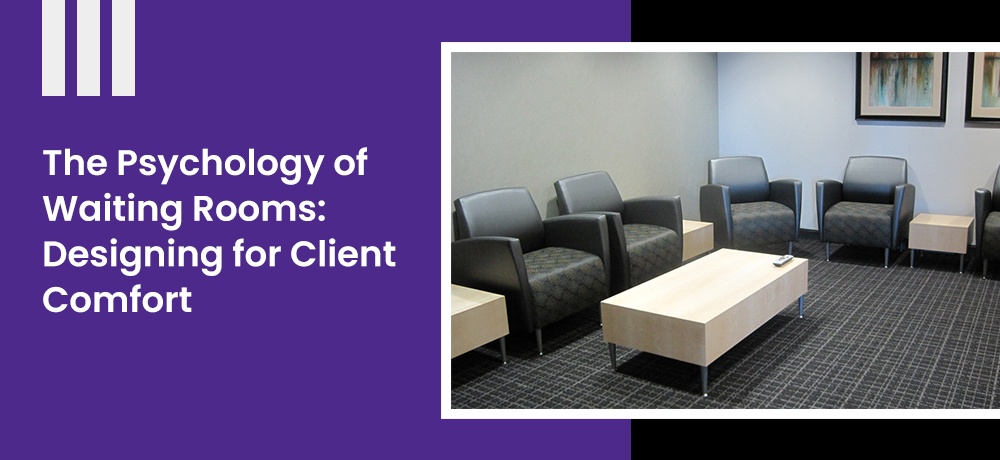The Psychology of Waiting Rooms: Designing for Client Comfort

In the world of business, first impressions count for a lot. When clients or customers walk into your office or establishment, the ambiance they encounter can significantly influence their perception of your business. One often-overlooked space where this first impression is formed is the waiting room. It's not just a place to sit; it's an opportunity to create a positive experience that can set the tone for the entire interaction. This is where the psychology of waiting room design comes into play, and it's more important than you might think.
The Waiting Room Experience Matters
Waiting rooms are where clients, patients, or customers spend their initial moments with your business. Whether it's a medical practice, law firm, or any other service-oriented business, the design and atmosphere of your waiting room can affect their emotional state and overall satisfaction.
Let's delve into the psychology behind waiting room design and how you can create a space that fosters client comfort and positive perceptions.
1. Comfort and Relaxation:
Seating Choices: Opt for comfortable, ergonomic seating options that promote relaxation. Soft, cushioned chairs or sofas with armrests can convey a sense of comfort.
Lighting: Use warm, soft lighting to create a cozy and inviting atmosphere. Avoid harsh fluorescent lighting, which can feel clinical and unwelcoming.
2. Reduce Perceived Wait Time:
Entertainment: Provide distractions such as magazines, newspapers, or a TV with engaging content. These can help clients pass the time and reduce their perception of wait time.
Wi-Fi Access: Offer complimentary Wi-Fi for clients to browse the internet or work while waiting. This can be especially appreciated by professionals with busy schedules.
3. Privacy and Personal Space:
Seating Arrangement: Ensure that seating is arranged to provide a sense of personal space and privacy. This can help clients feel more comfortable and less exposed.
Sound Control: Consider acoustics to minimize noise and create a quieter, more private atmosphere.
4. Aesthetics and Branding:
Colors: Choose colors that align with your brand and evoke the desired emotions. For instance, calming blues and greens can instill a sense of trust and tranquility, while vibrant colors can convey energy and creativity.
Branding Elements: Incorporate your company's branding through subtle touches like logo placement, wall art, or branded materials in the waiting area.
5. Nature and Biophilic Design:
Plants: The presence of indoor plants can have a calming effect on individuals. Incorporating elements of nature can promote a sense of well-being.
Natural Light: If possible, maximize natural light in the waiting room. Sunlight can positively influence mood and reduce stress.
6. Accessibility and Amenities:
Accessibility: Ensure that the waiting room is accessible to individuals with disabilities. This includes wheelchair-friendly seating and clear pathways.
Amenities: Provide amenities like water stations, charging outlets, and clean restroom facilities to enhance client convenience.
7. Art and Decor:
Artwork: Select artwork and decor that are aesthetically pleasing and culturally neutral. Art can inspire conversation and create a positive ambiance.
By understanding the psychology of waiting room design and incorporating these principles into your space, you can create a welcoming environment that puts clients at ease and sets a positive tone for their experience with your business. Remember that a well-designed waiting room is an investment in client satisfaction, which can lead to repeat business, positive reviews, and a strong reputation for your company.